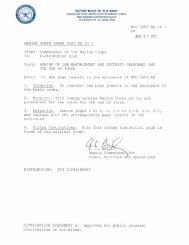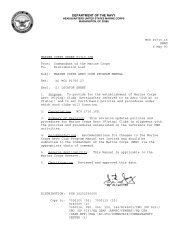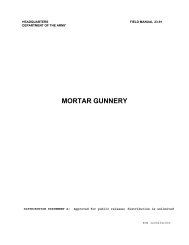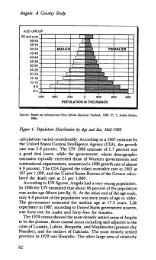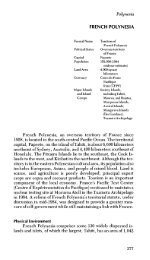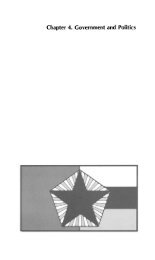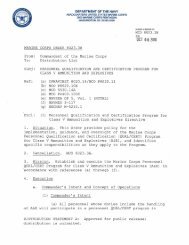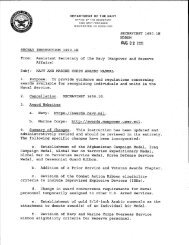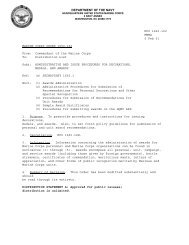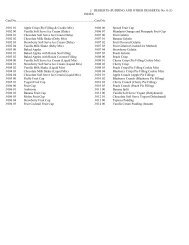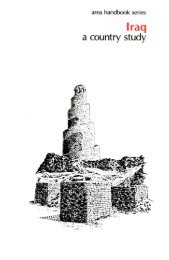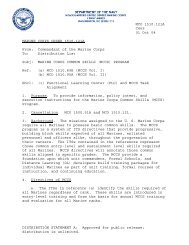MCO P1100.73B.pdf - Marine Corps
MCO P1100.73B.pdf - Marine Corps
MCO P1100.73B.pdf - Marine Corps
You also want an ePaper? Increase the reach of your titles
YUMPU automatically turns print PDFs into web optimized ePapers that Google loves.
MPPM OFFPROC<br />
1. The body may be divided between two basic components, fat tissue<br />
and lean weight (muscle and other parts of the body such as bones). A<br />
person’s fat content may be expressed as a percent of the total body<br />
weight. There are several methods for assessment of total body fat<br />
which vary from the simple and inexpensive (anthropometric measurement)<br />
to the very sophisticated and extremely expensive (potassium-40<br />
scintillation counting). Hydrostatic weighing (weighing a person under<br />
water to determine their specific gravity which is convertible to a<br />
relative percentage of fat) is generally accepted as the most accurate<br />
measurement of body composition. Anthropometry is a term that applies<br />
to measurement of the external aspects of the body, such as body<br />
diameters, circumference, and skinfold thickness. These anthropometric<br />
measurements have shown as high correlation with hydrostatic weighing<br />
as an accepted method to determine body composition.<br />
2. Scientific research has demonstrated that physical performance is<br />
adversely affected by excess body fat. From a health standpoint, the<br />
carrying of excess body fat has been recognized as a significant risk<br />
factor. Although there are no readily definable percent fat values for<br />
acceptable performance, there are ranges when it can be said that<br />
performance will be helped or hampered by body composition. Successful<br />
marathon runners average 10 percent body fat. Research with professional<br />
football players has shown that backs and wide receiver’s will<br />
usually be 8 to 10 percent fat, while linemen are between 10 to 16<br />
percent on the average. Individuals generally are considered grossly<br />
obese at 30 percent and above, while 20 percent body fat and above<br />
for average males is generally considered inappropriate for activity<br />
involving strenuous exertion. The average percent of body fat for male<br />
<strong>Marine</strong>s is 16.5 percent. The <strong>Marine</strong> <strong>Corps</strong>, more than any other<br />
military service relies on maximum allowable percent of body fat for<br />
the establishment of an alternate weight standard for male <strong>Marine</strong>s.<br />
The maximum is established at 18 percent and below.<br />
3. The following chart is provided as a field measurement for the<br />
estimation of percent of body fat for male <strong>Marine</strong>s. The waist circumference<br />
should be taken at the navel with the <strong>Marine</strong> standing evenly on<br />
both legs. The waist should not be "sucked in" but in a normal relaxed<br />
position. The tape should not cut into the skin but be able to move<br />
freely. The neck circumference should be measured at a point just<br />
below the larynx (Adam’s apple). Measurements should be read to the<br />
nearest 1/4 inch for the neck and 1/2 inch for the waist. Find the<br />
appropriate waist measurement on the left side of the chart and the<br />
appropriate neck measurement along the top of the chart.<br />
EXAMPLES<br />
NECK - 16 INCHES<br />
WAIST - 5 INCHES<br />
BODY FAT % - 15.6<br />
Figure 2-44.--Body Fat percentage for Men--Continued.<br />
2-121



